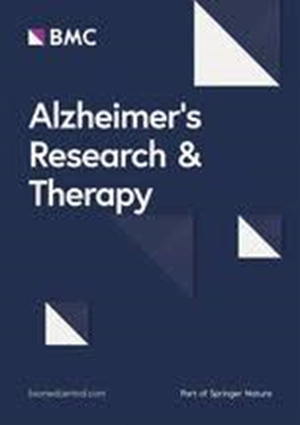受教育程度、吸烟状况和饮酒障碍与老年人痴呆症风险的关系:一项纵向观察研究
IF 7.9
1区 医学
Q1 CLINICAL NEUROLOGY
引用次数: 0
摘要
以往关于痴呆症风险与受教育程度、吸烟状况和饮酒障碍(AUD)相关性的研究得出的结果并不一致,这表明这些因素对痴呆症风险有潜在的异质性治疗效果(HTEs)。因此,本研究旨在确定可能导致这些因素在老年人中产生 HTEs 的重要变量。利用国家阿尔茨海默氏症协调中心(NACC)2005-2021 年的数据,我们纳入了首次就诊时认知正常的老年人(≥ 65 岁)。相关暴露包括大学或以上学历、当前吸烟和 AUD,结果为全因痴呆。我们采用双重稳健学习法来估计总体队列中暴露组和未暴露组之间的风险差异(RD)和95%置信区间(CI),以及通过决策树模型确定的亚组。在纳入的 10,062 名参与者中,有 929 人在中位 4.4 年的随访期间患上了全因痴呆症。在总体人群中,无论APOE4状态如何,大专或大专以上学历与较低的全因痴呆风险相关(RD,-1.5%;95%CI,-2.8至-0.3),尤其是在无高血压的亚人群中。目前吸烟与总体痴呆风险增加无关(2.8%;-1.5 至 7.2),但与患有(21.1%,3.1 至 39.1)和未患有(8.4%,0.9 至 15.8)脑血管疾病的男性痴呆风险增加显著相关。总体而言,AUD 与痴呆症风险的增加无关(2.0%;-7.7 至 11.7),但与患有神经精神障碍的男性痴呆症风险的增加显著相关(31.5%;7.4 至 55.7)。我们的研究发现了导致教育、吸烟和 AUD 对全因痴呆症风险的 HTEs 的重要因素,这表明需要采取个性化的方法来解决痴呆症的差异。本文章由计算机程序翻译,如有差异,请以英文原文为准。
Association of education attainment, smoking status, and alcohol use disorder with dementia risk in older adults: a longitudinal observational study
Previous research on the risk of dementia associated with education attainment, smoking status, and alcohol use disorder (AUD) has yielded inconsistent results, indicating potential heterogeneous treatment effects (HTEs) of these factors on dementia risk. Thus, this study aimed to identify the important variables that may contribute to HTEs of these factors in older adults. Using 2005–2021 data from the National Alzheimer’s Coordinating Center (NACC), we included older adults (≥ 65 years) with normal cognition at the first visit. The exposure of interest included college education or above, current smoking, and AUD and the outcome was all-cause dementia. We applied doubly robust learning to estimate risk differences (RD) and 95% confidence intervals (CI) between exposed and unexposed groups in the overall cohort and subgroups identified through a decision tree model. Of 10,062 participants included, 929 developed all-cause dementia over a median 4.4-year follow-up. College education or above was associated with a lower risk of all-cause dementia in the overall population (RD, -1.5%; 95%CI, -2.8 to -0.3), especially among the subpopulations without hypertension, regardless of the APOE4 status. Current smoking was not related to increased dementia risk overall (2.8%; -1.5 to 7.2) but was significantly associated with increased dementia risk among men with (21.1%, 3.1 to 39.1) and without (8.4%, 0.9 to 15.8) cerebrovascular disease. AUD was not related to increased dementia risk overall (2.0%; -7.7 to 11.7) but was significantly associated with increased dementia risk among men with neuropsychiatric disorders (31.5%; 7.4 to 55.7). Our studies identified important factors contributing to HTEs of education, smoking, and AUD on risk of all-cause dementia, suggesting an individualized approach is needed to address dementia disparities.
求助全文
通过发布文献求助,成功后即可免费获取论文全文。
去求助
来源期刊

Alzheimer's Research & Therapy
医学-神经病学
CiteScore
13.10
自引率
3.30%
发文量
172
审稿时长
>12 weeks
期刊介绍:
Alzheimer's Research & Therapy is an international peer-reviewed journal that focuses on translational research into Alzheimer's disease and other neurodegenerative diseases. It publishes open-access basic research, clinical trials, drug discovery and development studies, and epidemiologic studies. The journal also includes reviews, viewpoints, commentaries, debates, and reports. All articles published in Alzheimer's Research & Therapy are included in several reputable databases such as CAS, Current contents, DOAJ, Embase, Journal Citation Reports/Science Edition, MEDLINE, PubMed, PubMed Central, Science Citation Index Expanded (Web of Science) and Scopus.
 求助内容:
求助内容: 应助结果提醒方式:
应助结果提醒方式:


